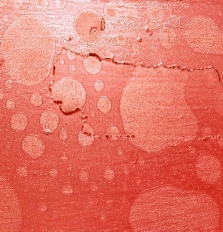Another Timbre TimHarrisonbre
Interview with Sebastian Lexer & Seymour Wright, August 2008
How did you first come across & become involved with improvised music?
Seymour: I have never been without improvised music. I grew up being taken to art galleries and concerts, surrounded by art and music – what I still call jazz – from the AACM to AMM to Louis Armstrong. Musicians would stay at, or visit, our house. I also began to explore the endless records at home, and was fascinated. The Crypt box set [by AMM] was one of the first I ever played. Importantly, though, it has always been a living music made by people who eat, sleep, talk, read and make music, and don’t just exist through records. When I began playing music, first trumpet at 7, then saxophone aged 12, I started from there.
Sebastian: In many respects I discovered improvised music fairly late. Although being generally aware of its existence, I hadn’t actively explored it in any way. Only through a growing interest in compositions by Cage, Cardew and Feldman have I discovered free improvisation for myself.
What brought you to London from Germany. Sebastian?
Sebastian: I had the idea to study music. I wasn’t interested in attempting to get into a conservatory, yet I did want to have the chance to do practical studies. London seemed at that time the best option to do both theoretical and practical studies.
You have both been very involved with Eddie Prevost’s improvisation workshop at Goldsmiths College. How did this come about?
Sebastian: The workshop actually never happened at Goldsmiths! From the start it happened in Borough. First in the Community Music Centre in Union Street, it then moved to Southwark Bridge Road, and finally to the Welsh Chapel a couple of doors further on. As John Tilbury had been teaching at Goldsmiths College, (he has been my piano teacher for many years) a whole group of students from Goldsmiths heard about the workshop and became quite regular players.
So when exactly did it start?
Seymour: It has been running weekly since autumn 1999. I went to the first and have been going every Friday I can, ever since. This year I have been to all of them.
Describe the early days of the Workshop.
Seymour: Unprecedented; a ‘school’ formed between the winter of 1999 and summer of 2000 with the coming together of a group of people who were almost exact peers and who shared unique, already defined instrumental ethics, identities and philosophies. Every Friday it felt there was a new music, a new way of playing that had not been before. Following the workshop we would talk about the music all that night and go on to play through the weekend, often with people we had met that Friday.
How has it changed over the years?
Seymour: It’s older, so for me the one big difference is that now the workshop has both a history and even tradition, which it didn’t have at its inception; the implications of this are at once clear, intricate and wide. It remains the place to be on a Friday night.
How has the workshop affected your music?
Seymour: Significantly and positively through the continued work it requires: the challenges it makes; the problems it poses; the questions it asks.
Are there other participants in the Workshop who have particularly influenced or impressed you?
Seymour: Anyone who comes or has come and been committed to the work impresses and influences me consciously and subconsciously; more time is spent listening than playing, so the tides, times and patterns of influence within the workshop are complex.
Both of you and other Workshop members formed the ensemble 9!, which released a cd on Eddie Prevost’s label Matchless a few years ago. Does 9! still exist?
Seymour: Yes 9! still exists. It was convened at a time when I was in Japan, but providentially for me the recording session for that disc took place a few days after I moved back to the UK.
Neither of you seeks to earn a living from playing music. Why is this, & what are the advantages and disadvantages of this strategy?
Seymour: As a language teacher I spend much of my day improvising and/or thinking about ways of facilitating improvisation on the part of others, so in this sense I have a professional connection with improvisation. But to me, work away from music is an essential part of my life and musical life; it affords me a real musical freedom to choose when and what to play without being beholden to produce, perform or deliver anything.
Sebastian: Earning a living from playing music can be fantastic and ought to be possible even if one engages in more experimental genres. However, knowing the continuous struggle of even the best and most renowned improvisers, it’s hardly possible to see any prospect of living off income from music alone, without there being also some aspects of musical compromises, active promotion and networking, and applications for additional funding. The effort and time consumed by these activities (“fund-raising exercises”) combined with the frustration of discovering the apparent agendas of many funding bodies felt inappropriate for me, so I have come to accept the ‘semi-professional’ nature of my musical work as a logical consequence.
My involvement in teaching at universities, and working both as an audio engineer and software programmer is also a very rewarding way of engaging in and contributing to the growing acceptance and interest in these alternative ways of music making.
It has to be said in any case that a non-commercial engagement with music enables a more rigorous approach to one’s own playing. In my case this involves developing a computer-based extension to the ‘extended techniques’ on the acoustic piano. For me the interest and focus of this development is the social interaction within ensembles engaging in free improvisation and the consequences of embedding technologies in such situations. Our forthcoming cd ‘blasen’ feels very satisfying and different in this respect, but it’s just one more step in a process of continuous development.
Seymour, I think I first came across you in 2000 through the ‘396’ disc on Matchless with John Lely and Yann Charaoui. Tell us about that disc and how do you regard it now?
Seymour: 396 is a record I fear few people have actually heard, which is unfortunate. It is strong. 396 contains the beginnings of many of the questions I’m still investigating through my music and saxophone philosophy – my current technique is very much intact, if nascent, on that record. It also contains John and Yann’s respective, peculiar and singular greatness. It’s an initial interrogation of concerns that have grown in my mind and music about proportion, scale and time, the nexus of actual and potential; and it’s most of all about learning.
You lived in Japan for a while and recorded two discs there on the Two Thousand And label. How did that come about, and did the Japanese scene influence you?
Seymour: Only part of one of the Two Thousand And records was recorded in Tokyo, when Ross [Lambert] came to visit; he put Lucky Rabbit together from a selection of recordings at the invitation of Michael Rogers and Anthony Guerra. The other record from Japan is Meeting At Offsite Vol. 1. on IMJ. It’s a 4:33 section of a performance with Tetuzi [Akiyama] and Toshimaru [Nakamura], the first concert I did in Japan.
Musically I think that was a good time to have been in Tokyo. The legacy of my time there is, I suppose, ideas about the scale and proportion of ideas.
Sebastian, for some time you’ve organised monthly concerts under the title Interlace, featuring most of the leading names in cutting-edge UK improv as well as lots of lesser-known musicians. Why did you set up this series, and what is the philosophy behind it?
Sebastian: London suffers from an incredible lack of cheap or free performance spaces, especially places which have a piano and are acoustically capable of presenting improvised music in a concert setting rather than just a gig. Being involved with Goldsmiths College and having the opportunity to utilise their facilities, it felt a logical step to create some sort of concert series. The location enables performances of a very special kind. The large room has a very good acoustic, even for really quiet music. Even the heavy traffic of the A2, and some inconsiderate passers-by don’t spoil the listening environment. Furthermore the support we receive in kind from the Electronic Music Studio, managed by Ian Stonehouse, in the form of electronic equipment, enables the realisation of projects with literally no budget, which otherwise would have consumed a lot of money.
I was clear from the start in March 2003 that INTERLACE should attempt to bring together performances featuring free improvisation, live electronics, and interactive composition in any combination and focus. Curating this series has been a very interesting experience, especially given my commitment to the exploration of electronic elements in performance, their implication on the musical outcome, and their juxtaposition with purely acoustic improvisations.
An additional feature has started to fascinate me over the years: observing how much the performances can be influenced by the previous set, often resulting in a very coherent musical discourse across the whole evening.
You’ve done a lot of work with John Tilbury on several projects, and he is clearly a major influence on your work. Could you tell us something about your relationship with him?
Sebastian: I met John as my piano teacher at Goldsmiths 13 years ago. He was certainly a mentor introducing me to certain strands in contemporary music, most notably Morton Feldman and Cornelius Cardew. His radical and uncompromising approach to performance and his emphasis on the importance of sound have facilitated my musical development. My previous interest in more mainstream jazz was in hindsight quite tentative and half-hearted – you could even say that I felt obliged to adapt to specific approaches and interests – leaving me with a constant feeling of unease. Speed and physical virtuosity were never of much concern for me, so my work with John often felt incredibly liberating, finding ways to combine my long lasting fascination for sounds (acoustic and synthesised) and performance and technology. Furthermore, John has been very helpful and supportive of my initial experiments with electronics. We’ve continued to collaborate beyond the college, and our relationship has become a friendship. I have recorded several of his recent projects and have worked with him on various projects involving electronics. I see certain similarities between my piano playing and his, especially if the keys are involved, which stem from an interest in the development of sounds. My approach to ‘inside piano’ has developed more out of playing at Eddie Prévost’s workshop, though this in turn involves some of the aesthetics akin to AMM.
Seymour, you recently issued a cd-r of your own solo playing: ‘Seymour Wright of Derby’. It’s been widely praised, and people have spoken of it as a “breakthrough”. I really like it, but to my ears it’s not so much a breakthrough as a continuation of the work you’ve been doing for several years in deconstructing the saxophone. How do you see it?
Seymour: The music is from 2005, 2007 and 2008. The first solo recording I made was in 2003, the year of my first solo performance, which is still one of only three solo performances to date. Seymour Wright of Derby follows on from that, and from my solo on the Matchless cd horn_bill, which was also from 2005. So, yes, it is in that sense very much a continuation of my own saxophone ethic; philosophically and procedurally I have been approaching the saxophone in a consistent way for the last decade. I read the idea of it being a ‘breakthrough’ more as something communicative – making my music available – rather than aesthetic.
Describe some of the techniques you use on blasen (the new duo disc with Sebastian), and what are you aiming to achieve with these unorthodox methods of playing? One critic has described you as having “an agonised relationship with the saxophone”. Is this true?
Seymour: The origins of my playing are moral – I felt, and still do feel, a certain moral responsibility and need to work with the saxophone in a way people do not seem to at present, to look beyond the scope of orthodoxy (even of current saxophone unorthodoxy) into the potential of the instrument, what it is and what it can be. This responsibility derives out of both an intellectual respect to explore, comprehend, and maybe understand, all of the instrument, its history, and also a sense that it somehow lags behind other instruments developmentally. Given what, for example, Sebastian [Lexer] or John [Lely] can do with a piano, it would be wrong of me when playing with them not to look to offer a balance on a similar scale/proportion of instrumental, and corollary musical, potential. This comes from making and thinking about music, and entails spending time with the instrument, as object, concept, history and imagined future – by which I mean years, decades of playing and listening. I am just getting started; the saxophone is of endless potential.
As for technique, in my notes to GAMUT , a forthcoming duo with Eddie [Prévost] on Matchless, I explain that my playing is an
enquiry into saxophonic actuality, through the potential inherent in, for instance, imagination, re-proportion, inversion, transformation, juxtaposition, construction, deconstruction, reconstruction, permutation, truncation and extension.
These are philosophical techniques, they are what I am doing, and they lead to physical techniques, which will or will not remain and re-appear, depending on how practical and practicable they are. So, I don’t think that my relationship with the saxophone is at all agonised, no. On the contrary it’s committed and celebratory, about respect and a love of music and the saxophone. Steve Lacy talks somewhere in an interview I read recently about ‘grappling with the saxophone’; this is perhaps close to what I’m trying to do.
I’m working on a text about my saxophone playing at present through which I’ll expand on these ideas.
Sebastian, can you describe how you are using the computer in blasen?
Sebastian: The technology used on blasen is a performance system developed by myself using Max/MSP. The basic idea behind it is that the system augments the potentialities of the acoustic instrument, without turning the performer into a computer operator. This implies that the system utilises a series of processes (audio analysis, sensor readings etc.) to capture the gestural information of the performance. These data streams are then used to influence audio processes on the audio feed from the instrument. As the entire system is dependent on capturing the activity on the acoustic instrument(s) with microphones, for both analysis and processing, a very intrinsic relationship between the acoustic and electroacoustic soundworld is enabled. While I was developing this system I realised that I am most interested in exploring the spaces between defined entities, whether they are within the socio-political, musical or technical ‘space’.
You spend more time in the body and on the strings of the piano that at the keyboard. Does this mean that you have an ‘agonised’, or at least problematic relationship with the instrument and its history?
Sebastian: I don’t have a definite answer to this. I am certainly aware of the historical baggage which seems to appear when one employs conventional pianistic techniques on the keys. Especially after a prolonged time of playing inside the piano, a single note played on the keyboard highlights and opens the personal and social association of these sounds. The general importance of the timbral content of notes, their development over time, might have to suffice as an explanation of the slower pacing I usually work with when I use ‘normal’ piano notes. But equally it comes from my interest in the ‘interspatial’ that I mentioned before; the scale from piano notes to extended techniques, leading to processed timbres. Normal piano notes often bring a certain directive into the sonic world.
Maybe my work on the computerised extended instrument has led to a degree of avoidance of straight piano sounds. However I’d claim that this is merely part of the process and development of this particular approach. Working with Seymour, among others, has defined another point for me: the piano is maybe one of the most rigidly fixed instruments, most obviously in the fact that as a pianist you have to just accept and deal with the physical ‘fitness’ and tuning of the instrument available. Performances within this genre hardly ever have even the budget to get the instrument tuned. But above all the physics of the instrument don’t allow any alteration of string tension and so on during a performance.
Some further problems are superimposed by the fears of some organisers and venues that one’s actions will damage the instrument. I overheard a stage manager at a London venue speaking admiringly about the incredible skill and physical strength of a pianist playing Rachmaninov in a performance that led to a couple of strings being broken. Then a moment later she refused to allow any of the strings to be touched by improvising musicians, as she feared this would break them (which in fact is barely possible without hard and sharp tools).
What are your future projects and plans?
Seymour: Working and playing.
Sebastian: We are hoping that blasen will contribute to a wider appreciation of the music being produced by the generation of musicians in and around Eddie’s workshop. We’ll also be more active in touring, and are planning to appear in various festivals. Our collaboration will certainly continue beyond this project and we want to investigate the musical space we’ve created much further. The current disc is just one stage in a continuous process of development.
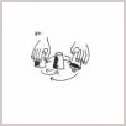
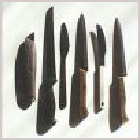
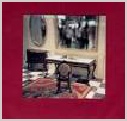
‘Blasen’
Sebastian Lexer & Seymour Wright at13
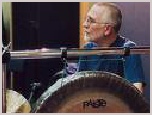
Eddie Prevost
‘Nonet’ by 9!
Matchless recordings
‘396’
Seymour Wright
John Lely
Yann Charaoui
Matchless recordings
‘Lucky Rabbit’
Seymour Wright
Ross Lambert
with Utah Kawasaki
Tetsuro Yasunaga
Ami Yoshida
two thousand and records

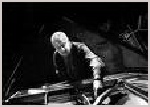
John Tilbury
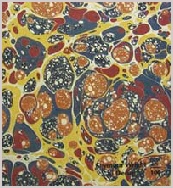
‘Seymour Wright of Derby’
self-released cd-r
